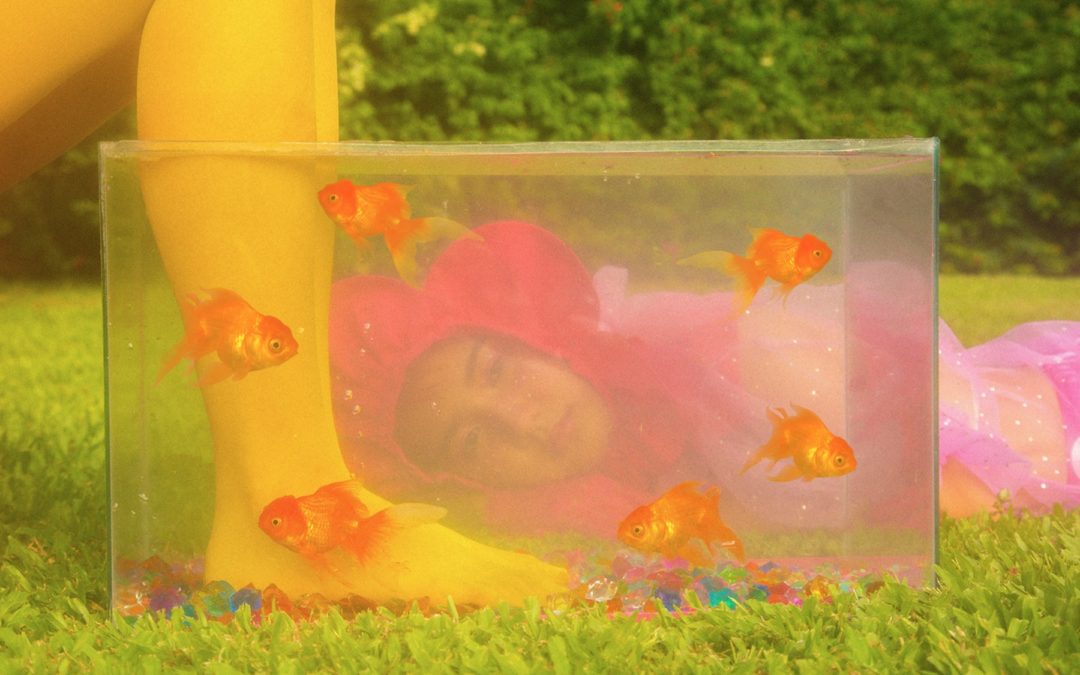Between hearts, butterflies, and flower emojis, twenty-three-year-old Thai artist Kraiwitch Tungsomboon tells about his photographic projects. He’s fresh out of college but already with an array of eye-catching series showing a playful and humorous approach to photography art.
His latest three series, The Nursery, Little Twinkle, and The Nanny, appear as vivid recollections of his childhood. A time he spent mostly in a nursery school surrounded by captivating people. He recalls and depicts these people through various whimsical characters that dwell upon a world of impeccably cultivated lawns and flower fields.
- The Nursery
“These are the kids that used to live around me—my first group of friends. Back then, life was full of excitement and fun. Everything started with just one question: what should we play today?” Tungsomboon says.
Any resemblance to a Teletubbies world is not merely coincidental. The children’s series from the late 1990s is one of Tungsomboon’s favorites until today. Like the chubby superstars, his characters also come in different hues that highlight their individuality. “Even back then, we all had our differences. The series is also a way to say that it’s okay to be different. We can still accept each other and live happily together,” he says, with a smiley face.

- Little Twinkle
In Little Twinkle, wearing flower customs, Tungsomboon depicts two sisters that were part of “the gang,” as he calls his groups of friends. The close bond they had is something vivid in his memory until today.
When asked about The Nanny, he laughs. “We had a nanny at the nursery. I drew her as a cartoon villain because she was very strict and extremely organized. She seems like a ferocious woman, but I loved her.” The pineapples in the series are an allusion to the Thai proverb, “eyes like a pineapple,” meaning a person who’s always patrolling everything.

The Nanny
To represent his dream-like world, Tungsomboon over saturates the colors and, sometimes, creates a DIY soft focus filter using a vaseline on lens effect. He also references old landscape posters and calendars to set his scenery, mostly shot in a studio.
His characters always wear a frisky combination of clothes, as if out of a fashion editorial piece. “It mirrors my own style,” he says. “In school, there were these junior girls that used to sit and wait for me to come. They were always curious to see the look I would come up with that day. They told me that later.”
- Cherry Girl
Fashion is a recurrent aspect of Tungsomboon’s photographs. Cherry Girl was his first fashion project, an assignment for his portrait class in which he depicts a working woman. Following a similar approach, Retro Woman draws inspiration from the Tomioka Dance Club, a group of high school girls who pay tribute to the 1980s Japanese bubble economy. The series recreates the 1980s career woman in all its glory with a wardrobe entirely collected from second-hand shops around Chiang Mai.


Retro Woman
Now in Bangkok, Tungsomboon is paving his way through the city’s creative scene. Being called an artist still amazes him. “Being an artist is something that I always wanted. I still need to work on my artistic career and make connections,” he says. He hopes that he can stay true to himself along the journey, as it’s his ability to channel his playful personality into art that makes his work stand out so beautifully.










